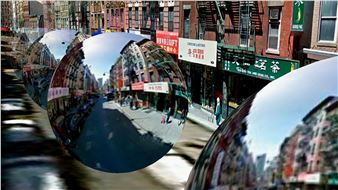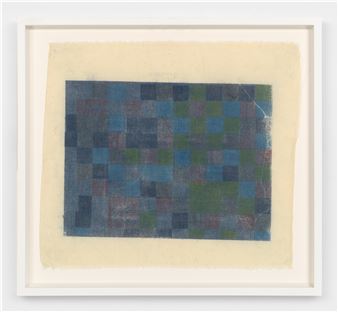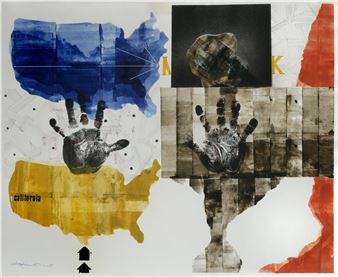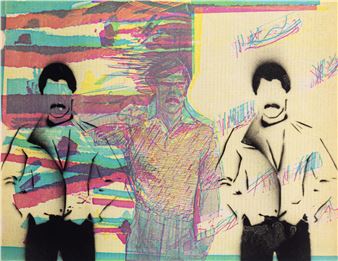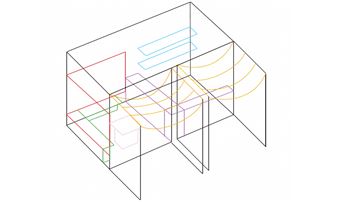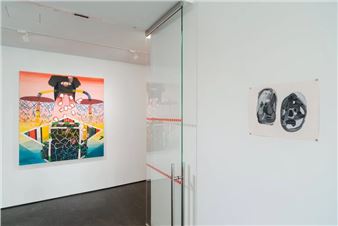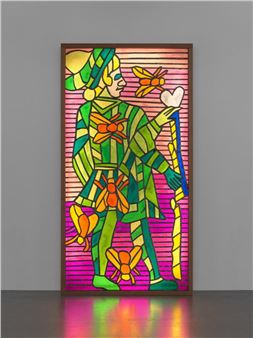Andy Kincaid: No holiday is Forever
An unbuilt dream home:
In 1937, Mrs. H set off to build her dream home on a cattle ranch on the Snake River near Wilson, Wyoming. Positioned under the majestic Teton Mountains, the ranch was the largest deed in the area and could produce its own food, water and electricity. For Mrs. H, the ranch was a holiday forever that possessed the ideals of westward expansion and the mathematical sublime.
Infatuated with the prevailing International Style, Mrs. H, through a family connection, commissioned architect Philip Goodwin and a Harvard Architecture School graduate student to build the home in the style of Le Corbusier. Bringing harmony to the conditions of a growing industrial landscape, the International Style dream home was a machine. Across America bore the dialectics of the modernist’s standardized blocks that stood in contradistinction to the landscape. At the time, Corbusier was interested in the relationship between ramps and hills; the experience of the ramp was an architectonic promenade; nature was dispossessed. “National parks are a secular society’s sacred places”, and for Mrs. H, this Teton home represented the ideals of an emerging modern life that was spreading across the west uninhibited by the changing topography.
Spanning a millstream that branched off of the river, the central feature of this dream home was a dining area that floated above the water with views of the mountains in the distance. The success of her dream home was based on the development of a newly organic -- that is, newly organized -- environment, and emphasized the boundary between human, narration and landscape.
After the construction of four concrete piers that would support the dining room above that arm of the Snake River, Mrs. H lost confidence in the young architects and turned to Alfred Barr, the director of MoMA, to find another architect. In 1937, internal divisions within the MoMA board of trustees centered around a debate as to which architect would build the next midtown New York museum space. Barr and Mrs. H supported architect Mies van der Rohe while Abby Rockefeller, a fellow trustee and Wyoming neighbor, supported Philip Goodwin. Since Mrs. H was having troubles with her dream home, Barr suggested bringing Mies onto the project as a way of getting him into the United States. Writing to Mies, Barr noted that “the house would be situated in the mountains of the west. The site is magnificent in its surroundings and the house itself would be fairly large. It would involve certain problems which I think would interest you.”

Recommended for you
An unbuilt dream home:
In 1937, Mrs. H set off to build her dream home on a cattle ranch on the Snake River near Wilson, Wyoming. Positioned under the majestic Teton Mountains, the ranch was the largest deed in the area and could produce its own food, water and electricity. For Mrs. H, the ranch was a holiday forever that possessed the ideals of westward expansion and the mathematical sublime.
Infatuated with the prevailing International Style, Mrs. H, through a family connection, commissioned architect Philip Goodwin and a Harvard Architecture School graduate student to build the home in the style of Le Corbusier. Bringing harmony to the conditions of a growing industrial landscape, the International Style dream home was a machine. Across America bore the dialectics of the modernist’s standardized blocks that stood in contradistinction to the landscape. At the time, Corbusier was interested in the relationship between ramps and hills; the experience of the ramp was an architectonic promenade; nature was dispossessed. “National parks are a secular society’s sacred places”, and for Mrs. H, this Teton home represented the ideals of an emerging modern life that was spreading across the west uninhibited by the changing topography.
Spanning a millstream that branched off of the river, the central feature of this dream home was a dining area that floated above the water with views of the mountains in the distance. The success of her dream home was based on the development of a newly organic -- that is, newly organized -- environment, and emphasized the boundary between human, narration and landscape.
After the construction of four concrete piers that would support the dining room above that arm of the Snake River, Mrs. H lost confidence in the young architects and turned to Alfred Barr, the director of MoMA, to find another architect. In 1937, internal divisions within the MoMA board of trustees centered around a debate as to which architect would build the next midtown New York museum space. Barr and Mrs. H supported architect Mies van der Rohe while Abby Rockefeller, a fellow trustee and Wyoming neighbor, supported Philip Goodwin. Since Mrs. H was having troubles with her dream home, Barr suggested bringing Mies onto the project as a way of getting him into the United States. Writing to Mies, Barr noted that “the house would be situated in the mountains of the west. The site is magnificent in its surroundings and the house itself would be fairly large. It would involve certain problems which I think would interest you.”

 ARTISTS
ARTISTS







